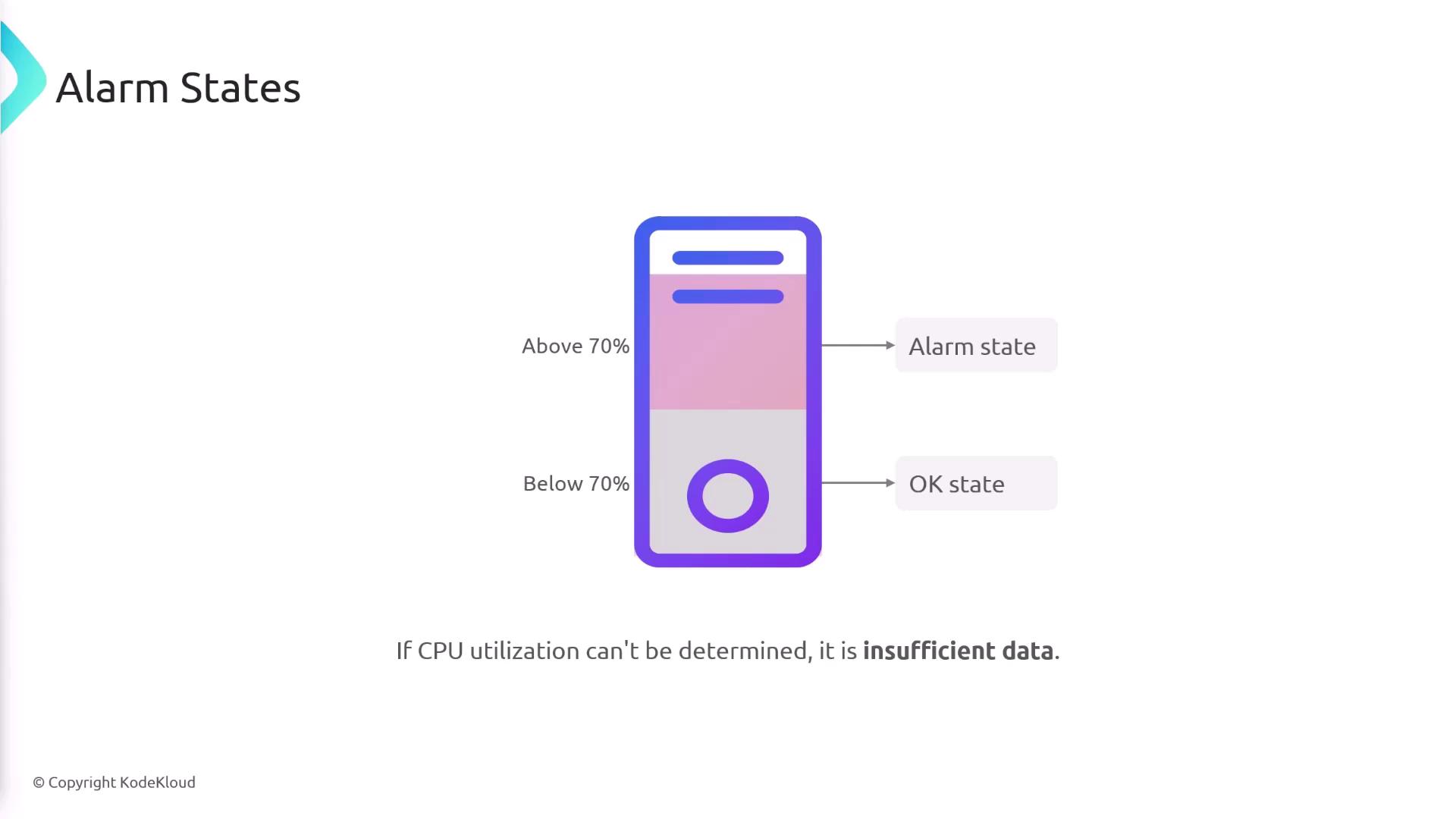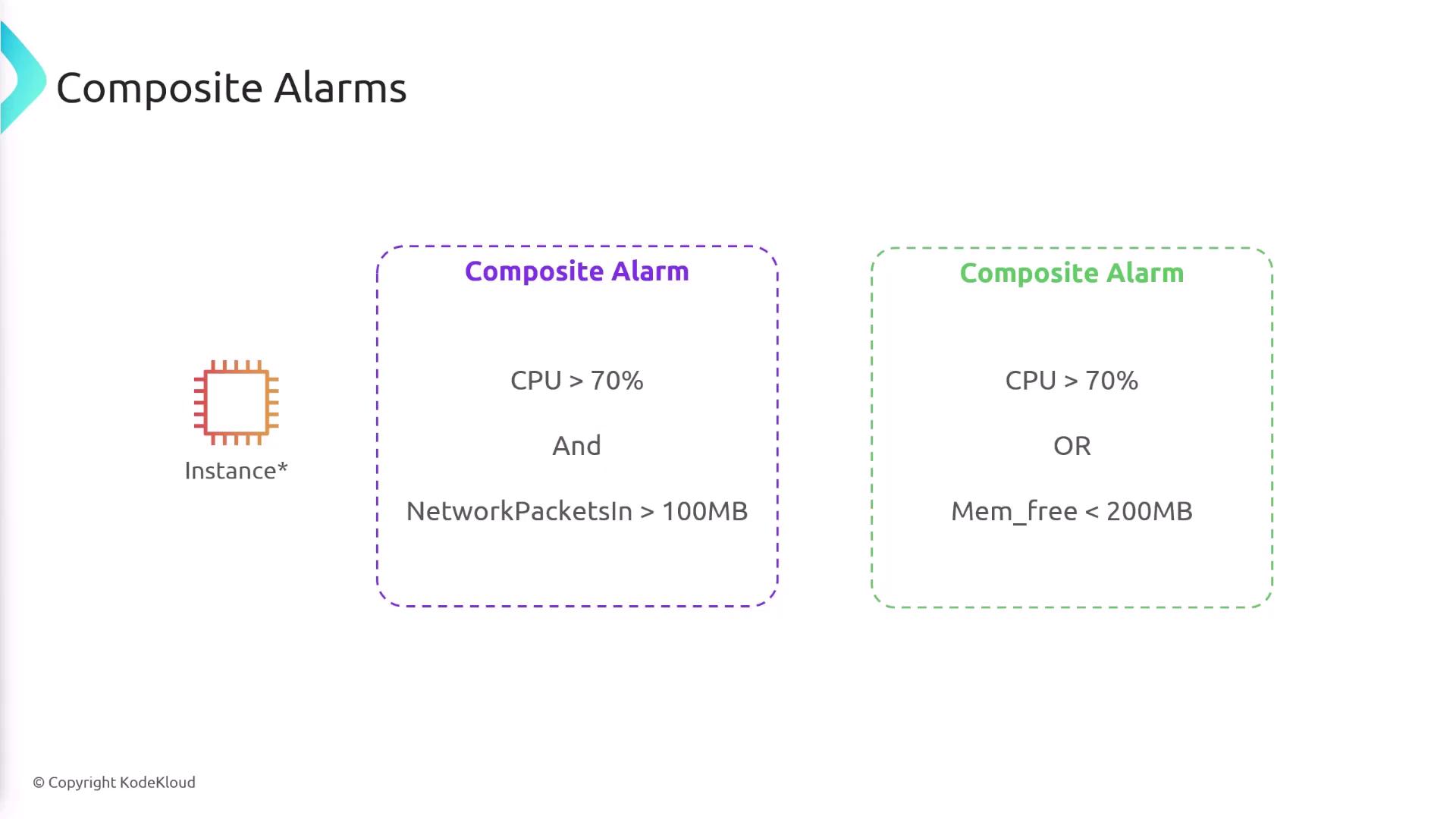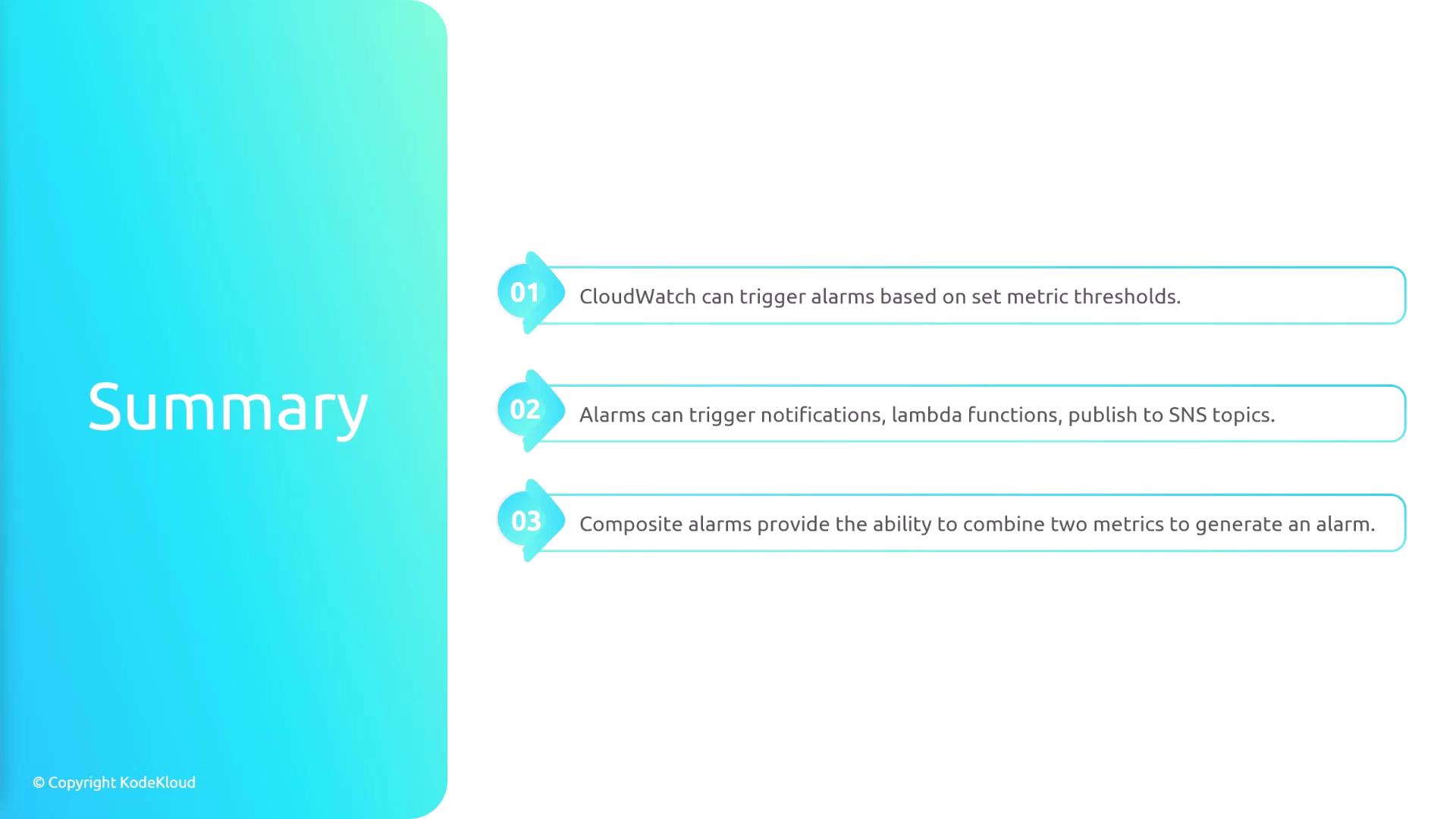AWS Certified Developer - Associate
AWS Monitoring
Cloudwatch Alarm
In this lesson, we explore CloudWatch alarms and how they enable automated monitoring of your AWS resources. With CloudWatch, you can set thresholds for various metrics so that an alarm is triggered when a specified value is reached. For example, you can configure an alarm for an EC2 instance to trigger if the CPU utilization exceeds 70%. When activated, the alarm can perform a series of actions such as sending notifications, invoking a Lambda function, or publishing to an SNS topic.
Alarm States
A CloudWatch alarm can be in one of three states:
- OK: The monitored metric is below the defined threshold (e.g., CPU utilization is below 70%).
- Alarm: The metric exceeds the set threshold (e.g., CPU utilization is above 70%).
- Insufficient Data: The current value of the metric is indeterminate.

Note
CloudWatch alarms help proactively manage your cloud infrastructure by ensuring that critical thresholds are always monitored.
Composite Alarms
One of the most powerful features of CloudWatch is its capability to monitor multiple metrics with a single alarm, often referred to as composite alarms. You can configure composite alarms using both AND and OR conditions, depending on your monitoring requirements.
Example of AND Condition:
- CPU utilization is above 70%, AND
- Network packets in exceed 100 megabytes.
Example of OR Condition:
- CPU utilization exceeds 70%, OR
- Available free memory drops below 200 megabytes.

Summary
CloudWatch alarms provide an effective solution for monitoring critical metric thresholds and automatically triggering actions such as notifications, Lambda function invocations, or SNS topic publications. Moreover, the flexibility of composite alarms enables you to combine multiple metrics, ensuring a comprehensive monitoring strategy tailored to your specific needs.

Key Takeaway
By leveraging CloudWatch alarms, you can ensure better resource utilization, faster response times to system anomalies, and improved overall system reliability.
Watch Video
Watch video content